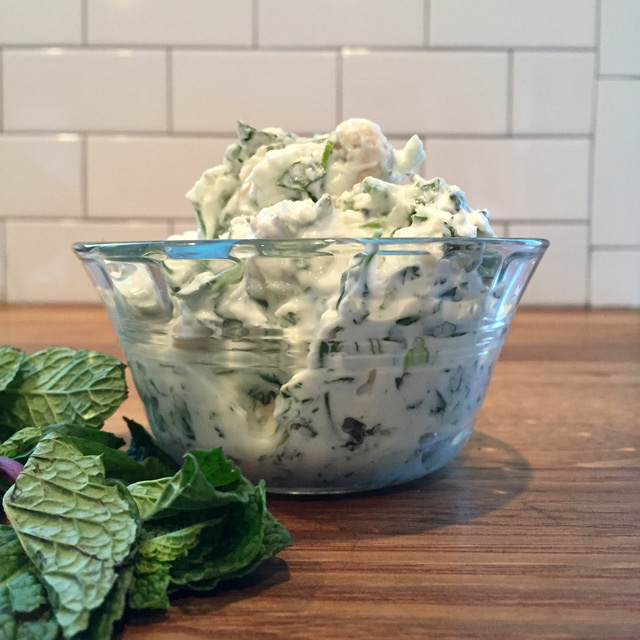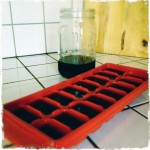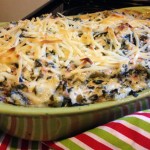Mint Cashew Dahi Chutney
This chutney has punch and the flavors are complex – sweet, spicy, nutty and a tang all in one. It’s simple to make and has major “wow factor”. Make it as an appetizer with naan or as a dressing over tofu or chicken or as a sandwich spread. I want to explore more chutney recipes because of this versatility. As you know, I’ve been learning to cook Indian food and this dish was a big win with my official taster – the husband.
I found the recipe on rugallivingnw.com
INGREDIENTS (makes 1 cup)
1 bunch fresh cilantro leaves
1/2 c. fresh mint leaves
1/4 c. unsweetened, flaked coconut
1 t. finely grated ginger root
1 garlic clove, minced
1 small jalapeno minced (adjust to taste)
1/4 c. cashews
1/2 lemon, juiced
1 t. sugar (I used Coconut Sugar) (I omitted this)
1/2 c. plain greek yogurt
salt to taste
INSTRUCTIONS Place all ingredients in a food processor and blend for 3-4 minutes until relatively smooth. Add salt to taste. Serve chilled. My food processor is still packed in a box somewhere so I just gave mine a good mix. I do suggest using a mixer to breakdown the nuts.
A chutney made with yogurt is called a dahi chutney – dahi means strained yogurt. This type of chutney originates from north India and Pakistan. Learning to cook India food also means learnding about the foods origins, here’s more on chutney…
Chutney is a side dish in the cuisines of the Indian subcontinent that can vary from a tomato relish to a ground peanut garnish or a yoghurt, cucumber and mint dip.
Similar in preparation and usage to a pickle, simple spiced chutneys can be dated to 500 BC. Originating in India, this method of preserving food was subsequently adopted by the Romans and later British empires, who then started exporting this to the colonies, Australia and North America.
As greater imports of foreign and varied foods increased into northern Europe, chutney fell out of favor. This combined with a greater ability to refrigerate fresh foods and an increasing amount of glasshouses meant chutney and pickle were relegated to military and colonial use. Chutney reappeared in India around the 1780s as a popular appetizer.
Diego Álvarez Chanca brought back chili peppers from the Americas. After discovering their medicinal properties, Chanca developed a chutney to administer them. This coincided with the British Royal Navy’s use of a lime pickle or chutney to ward off scurvy on journeys to the new world.
In the early 17th century, British colonization of the Indian subcontinent relied on preserved food stuffs such as lime pickles, chutneys and marmalades. (Marmalades proved unpopular due to their sweetness and a lack of available sugar.)
Beginning in the 17th century, fruit chutneys were shipped to European countries like England and France as luxury goods. These imitations were called “mangoed” fruits or vegetables, the word ‘chutney’ still being associated with the lower working classes. Read more.
Fun fact: The word “chutney” is derived from the Hindi word chatṭnī, meaning to lick.
























